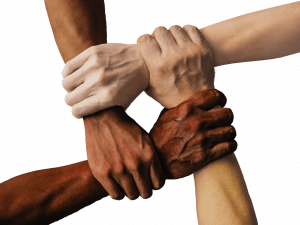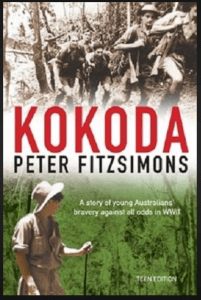Category Archives: Book review
Book Review – Olivia Twist by Strauss, Dalva, Vieceli and Loughridge.
Title:
Authors and Illustrators:
Darin Strauss, Adam Dalva, Emma Vieveli and Lee Loughridge.
Published by:
Dark Horse Publishers (2019).
Olivia Twist is a dystopian graphic novel parody of the Dickens classic ‘Oliver Twist” that is set in futuristic 2050 London, where society is racially divided and the politically strong have a dependence on artificial intelligence. This particular edition is a compilation of four consecutive stories. Fans of the Dickens narrative would be able to easily identify the several similarities between the traditional version and this text, including the inclusion of characters such as Mr Beedle, Fagin, Artful Dodger and the presence of violent street gangs.
This GN Olivia Twist is a very complex text. The illustrations are brilliant, and much of the storyline is coded within the visual elements. The use of colour, line and framing causes the reader to become immersed in the storyline. As the plot contains several twists and turns, the reader is forced to question the direction of the narrative and make predictions as to the actions of the protagonist. The text contains several attributes that appeal to teenagers. Obviously the predominating feature is that this is a graphic novel. Graphic novels are very popular with children and teenagers, and their multimodality promotes the development of 21st century skills such as visual literacy, critical thinking and intertextuality (Botzakis, 2018). Furthermore, this dystopian text breaks gender stereotypes, contains elements of Bildungsroman, and promotes moral development.
As a fan of the original version, I found it difficult to read this text without comparing it to the original novel. Additionally, my visual literacy is still emerging so decoding the images and illustrations required more time and effort than I expected. I had to read this GN a few times to understand it properly and to see all of its different layers. This book would be suitable for students over the age of 14 due to the presence of swearing and frequent depictions of violence. This GN meets English curriculum links in years 9 and 10 and would make an excellent substitute or alternative novel study to Huxley’s Brave New World, Dashner’s Maze Runner and Collins’ Hunger Games.
Graphic novels (GN) are an excellent addition to school library collections. When used in educational practices, GN fosters comprehension and increases recall. As the text is supported by images, GN are ideally suited to students with developing literacy (Botzakis, 2018). Their visual permanence means that the reader can choose their own reading pace and allows them to re-read as needed. But just reading GN does not mean that the students’ literacy levels will instinctively improve. GN requires the reader to make inferences, which promotes high order thinking, as well as providing contextual information to the reader (Botzakis, 2018). Their complex nature means that educators need to teach decoding and comprehending GN the same way as they teach traditional texts (Botzakis, 2018).
Good GN possess traditional narrative features such as an overarching theme, depth of plot, character development and use of literary devices (Gonzales, 2016). Additionally, they also have classic film elements such as line, colour, focus, transitioning and framing (Gonzales, 2016). One of the discerning factors between a literary GN and a comic strip is the depiction of women (Gonzales, 2016). Unlike vintage comics where the female characters resemble wasp shaped Amazons that may or may not have floss for brains, modern GN acknowledge that young girls need strong and clever female protagonists. Olivia Twist’s twist on the Dicken’s classic has strong female characters. An example of this strength would be the character of Fagin and her female band of misfits, code named Esthers, all of whom are fiesty women that exhibit racial and physical diversity.
Brannen (2013) believes that teenagers like to read about characters that have personal struggles that relate to ‘coming of age’. In this text, Olivia has lived her whole childhood starved of love and a family. She seems unaware of her own inner strength and manages to overcome all her obstacles with determination and innate need to protect those weaker than herself. After all, isn’t morality and ethics about ensuring all members of society are dealt with fairly? Not just the loudest and strongest, but even the small, weak and innocent.
Whilst Olivia Twist cannot be described as a contemporary realistic fiction due to its dystopian and science fiction characteristics, there are elements of Bildungsroman present within the text. Bildungsroman is a term used to describe texts that are centralised upon the development of a youthful protagonist (Cody, 2005). This development is usually focused on socio-cultural themes such as morality, race and class, as it provokes vigorous social discourse.
The inclusion of these themes and following social discourse allows the adolescent reader to develop their moral compass (Bushman & McNerny, 2004). Olivia’s love for Pip and her determination to keep him safe ends up being the deciding factor in her survival. Moral development in teenagers is shaped by the moral dilemmas they are exposed to. Reading fictitious stories that have moral choices within help students to differentiate between what is right and what is wrong. After all, as Edmund Burke famously said “The only thing necessary for the triumph of evil is for good men to do nothing” (quotationspage.com). When considering this text’s similarity to the previously mentioned texts by Huxley, Dashner and Collins, the similar vein in all three, is an ethical dilemma faced by the fringes of society.
The actions by the protagonist in all of these texts could be viewed as legally wrong by the prevailing standards of their society. The reader is able to engage with these moral and ethical dilemmas and with the help of social discourse, determine if the actions of the character were truly wrong or is the society actually at fault? Society is not an indicator of social morality. History has proven time and time again that what is right and what society determines is right can be two very different things. Just look at the evolution of civil rights. In the 1800’s, women were considered property and did not have the right to own property in their own right or vote. Whilst this has been overturned in most nations, some cultures still inhibit women from equal participation. In Australia, the Indigenous peoples were considered as part of the ‘flora and fauna’ till a national referendum in 1967 revoked that viewpoint and Indigenous people were then included as part of the national census. As individuals, we all play a part in monitoring the morality of society.
Classic young adult novels such as Olivia Twist lure the reader into the storyline with its multimodal format and then provokes them into analysing the character and their actions. The reader is able to evaluate the actions of the protagonist and decide if the action is acceptable or not. It is through this evaluation process that the reader develops their moral compass. Besides addressing curriculum links within the English curriculum, the strong female protagonist in the narrative provides a positive depiction of women and this is really important for young girls. The inclusion of good graphic novels into high school library collections meets the cognitive, behavioural and developmental needs of young adult readers.
References:
Botzakis, S. (2018). Comics in the classroom: Using graphic novels for content learning. In D. Wooten, B. Cullinan, L. Liang & R. Allington (Eds). Children’s literature in the reading program: Engaging young readers in the 21st century, (5th ed., pp. 140-152). Retrieved from Proquest Ebook Central.
Brannen, J. (2013). All about realistic fiction for teens. NoveList. Retrieved from https://www.ebscohost.com/uploads/novelist/pdf/Teen_RealisticFiction_GenreOutline.pdf
Bushman, J.H. & McNerny, S. (2004). Moral choices: Building a bridge between YA literature and life. ALAN Review, 32(1), 61-67. Retrieved August 2016.
Cody, D. (2005). Bildungsroman. Victorian Web – Literature, History & Culture in the age of Victoria. Retrieved from http://www.victorianweb.org/genre/bildung.html
The Quotations Page. (2018). Edmund Burke. Retrieved from http://www.quotationspage.com/quotes/Edmund_Burke/
Gonzalez, J. (2016). Graphic novels in the classroom. [Blog] Cult of Pedagogy. Retrieved from https://www.cultofpedagogy.com/teaching-graphic-novels/
Book Review – A bad boy stole my bra by Lauren Price
Title: A Bad Boy stole my Bra
Author: Lauren Price
Published: Ink Road, 2018.
Verdict: I AM TOO OLD FOR THIS BOOK!
Ok I am probably being melodramatic here! Price’s book is funny and quirky and everything a tween or younger teen would like.
Reasons being:
- The title catches the eye.
- The language is witty and funny.
- The storyline is very popular with teenage girls.
- It is a classic YA novel.
I, on the other hand, am about a score of years too old for a book like this!!
Reasons being:
- The vision of waking up to a random male holding up my wired underwear is rather frightening.
- After being in a stable relationship for nearly fifteen years, the idea of dating is also frightening.
- And the only one I want holding my bra up is the person who is hanging up my washing!
I am too old to be reading books like this.
THE END.
Book Review – Kokoda by Peter Fitzsimons
THE BOOK: Kokoda (Teen Edition) by Peter Fitzsimons.
Published by Hachette Australia in 2016
Cover reproduced with permission from Kokoda: Teen edition by Peter FitzSimons, Hachette Australia, 2016.
The Summary: Kokoda is a well written narrative non fiction book by an acclaimed Australian writer Peter Fitzsimons. The story is about a group of young Australian men, most still teenagers, trying to make a stand against the much stronger Imperial Japanese Army in the treacherous terrain of Papua New Guinea. The story of the Kokoda trail is eerily similar to Gallipoli, and for many people this historical event builds upon the ANZAC legend. Aimed at readers over 12 years old, this book is ideal for teenagers to read for recreational and academic purposes.
The Good: Fitzsimons captures the essence of the young Australian men magnificently. His use of colloquial language and casual references to Sydney strests gives the reader confidence in the author’s authenticity and veracity. Kokoda is a well written text that describes the events of 1942 in superb detail. Battle scenes and forced marches are brought to life vividly. His use of language was subtle, allowing the reader to become engaged with the story but at the same time not overwhelming them with military jargon and complex sentences. This book’s storyline and prosaic style would suit teenage boys very well.
The Bad: The format of the book was consistent with other expository texts with the inclusion of a contents page, maps, photographs, reference list and index. But unlike many other information texts, this book did not have any other additional resources, such as links to further reading or websites such as the Australian War Memorial Kokoda Collection.
The Interesting: It was interesting reading Fitzsimons’ perspective on the Kokoda campaign as his stance differs from the viewpoints of other war writers and journalists. Unlike the official war reports, Fitzsimons is quite scathing of the military hierarchy’s competency. He is very blunt in the way he points out that Australians died in New Guinea because of mismanagement. He also points out the conflict between the celebrated MacArthur’s battle plan and Pott’s frontline perspective. Fitzsimons is just short of scathing in the way he refers to MacArthurs’s speaking of battle tactics whilst safely ensconced in his office over 2000 km away from the jungles of New Guinea. He also discusses the Battle of Milne and points out the manner in which MacArthur claimed the victory as part of his plan rather than the effort of Australian boots on the ground.
The Verdict: Kokoda meets content standards within the Year 10 History Curriculum – Experiences of Australians during World War 2. It is an excellent resource for teenagers as it contains both facts and figures, yet written in a narrative style. This style allows the reader to become engaged with the text and have an increased recall of the information within. Intermixing prose and factual information requires the reader to become more analytical and thus improves critical thinking skills. The conflicting views that Fitzsimons offers about MacArther gives the reader a chance to question bias in texts. The book also allows the reader to connect their prior knowledge of the Gallipolli digger to the story of the Kokoda trekker and build their knowledge of Australian history. Additionally, as the book is classified as a non fiction resource, more classroom teachers are comfortable using them as resources for teaching and learning. This is because some educators have an unconscious bias towards the implementation of literature outside the language arts curriculum. Kokoda would be an asset for high school library collections and a useful literacy resource.
Book Review – “After Auschwitz” by Eva Schloss
After Auschwitz by Eva Schloss (2013).
One girl lived. The other died. Eva Schloss survived the Holocaust. She survived Auschwitz. Her step-sister Anne Frank did not.
Eva’s autobiography, “After Auschwitz” is an excellent example of narrative non fiction. Beautifully written, this book encapsulated the heartache, loss and survivor’s guilt that Eva felt in the years after the war. The inclusion of narrative techniques such as theme, plot and character development, allows the reader to engage deeply with the text and the author. The story beautifully interweaves factual information with prose, causing the reader to undergo a cognitive and emotional shift towards self actualisation of themselves, their community and greater society.
“After Auschwitz” uses storytelling as a method of affecting the cognitive and emotional development of the reader. From an anthropological perspective, human beings are ingrained to respond to stories as a method of conveying folklore, information and heritage. Literary nonfiction, also known as narrative nonfiction, is a sub genre of literary work that uses fictitious elements to convey important data. Many educators advocate the implementation of literature within the curriculum as a method to engage and inform students. Most commonly seen in art, history and science disciplines, literary nonfiction is often used by educators to impart pertinent information in a captivating format across all levels of schooling. Schloss’ autobiography fulfills Year 10 English and History curriculum as well as the General capabilities in Literacy and Ethical Considerations (ACARA, 2014a; ACARA, 2014b; ACARA, 2014c; ACARA, 2014d). Therefore, from a secondary school perspective, this piece of narrative nonfiction addresses the needs of the students and the curriculum.
Literary nonfiction (NF) is an eminent method of introducing facts to students of all ages as the use of storytelling to convey information is an ancient one. From the time of oral traditions, narratives have been used to instruct and inform (Gill, 2009). Storytelling has the ability to convey social values, improve recognition of self, and increase tolerance and empathy (Comer-Kidd & Castano, 2013). According to Cornett (2014), narrative non fiction allows readers to engage with the narrative overtly and covertly comprehend and understand the facts (p.161). Most commonly seen in the fields of arts, science and history, literary nonfiction has subgenres of exposition, argument and functional (Morris, 2013). Non fiction picture books, biographies such as “After Auschwitz”, autobiographies and memoirs are excellent examples of narrative non fiction texts commonly found in secondary school libraries.
Good narrative NF is designed to give the same pleasure and enlightenment as fiction, using techniques of theme, character and plot development to impart factual information (Kiefer & Wilson, 2010; Morris, 2013). This storytelling execution connects carefully researched factual elements into a structure that is appealing and memorable to the student (Morris, 2013; Cornett, 2014, p.151). Schloss’ heartfelt retelling of her time in Auschwitz is remarkably vivid. Her memories and descriptions of the death camps are carefully crafted together to create a literary work that increase self awareness in the reader, leading to a change in cognition, self awareness and actualisation about the way the reader thinks about themselves, their society and the world in general (Morris, 2013; Kiefer & Wilson, 2010).
Literary NF such as biographies are easier for students to engage with as their structure is familiar and raises less resistance from reluctant readers and students with low literacy (Gill, 2009). Schloss’ text increases vocabulary with subject specific language such as ‘concentration camp’ and ‘Gestapo’ in a non threatening manner (Gill, 2009). Additionally Cornett (2014) found recall of information is higher from narrative non fiction than information texts (p.151). This is shown by the way the reader engages with Eva. This personal engagement with the character increases their cognitive and developmental change and therefore improves their recall of pertinent information.
Narrative NF increases critical thinking skills because the factual information within the text is woven into the storyline (Morris, 2013). This means the reader has to critically analyse the text to infer, evaluate and make their own conclusions. Eva’s survivor guilt manifested by the time and effort she poured into the Anne Frank Centre with her step-father Otto Frank. But this guilt is not explicit in the text. It is implicit and needs to be deduced from the language used within the text and from prior knowledge of other survivors. Students who engage with narrative NF on a regular basis improve their critical thinking skills, which in turn translates to increased ability to comprehend information texts in other disciplines. Literary nonfiction is also an excellent resource for stimulating class discussions, inquiry and other collaborative learning groups (Morris, 2013).
An unlikely benefit of increasing literary non fiction into secondary school collections is meeting the literacy needs of reluctant readers. Many students prefer non fiction texts to fiction, specifically young adolescent males preferring factual texts to fiction as they view fiction as ‘unrealistic’ and ‘unnecessary’ as well as ‘unconnected’ to the real world (Harper, 2016; www.k12reader.com). This disinclination is often visible when students are required to read prescribed texts as part of their teaching and learning. The inclusion of narrative NF means that students who are disinclined to read fictitious texts can be offered a suitable narrative NF as an alternative and thus are able to meet the learning outcomes. It is also important to point out that biographies, autobiographies and memoirs are excellent examples of narrative nonfiction. These texts have all the literary features to placate the soul as well as provide opportunities for students to envision any life long passions and career choices (National library of NZ, 2014).
One of major issues with using literary NF in classrooms is that some students struggle to see the difference between narrative NF and fiction (Kiefer & Wilson, 2010). It is possible that students confuse fictitious texts such as Boyne’s ‘the boy in the striped pajamas’, Zusak’s ‘Book Thief’ and Zail’s ‘The wrong boy’ with Schloss’ biography. But is this not due to a lack of critical literacy? By encouraging the use of narrative NF in classrooms, teachers and teacher librarians are able to explicitly teach students how to analyse the text, make inferences and draw conclusions. It is only by practicing these skills at regularly can students practice their critical thinking skills.
From a collection and curriculum perspective, there is a strong push from curriculum leaders to implement the use of informational texts such as textbooks, with their facts, figures and images rather than narrative NF (McNeil, 2015). This is under the false assumption that texts with clear curriculum links have more value than resources that are aesthetically pleasing and address emotional development (Barone, 2011, p.18). Teacher librarians and educators need to combat this misinformation by using evidence based practice to integrating literature across the curriculum.
Narrative nonfiction is an excellent source of literary text in secondary school classrooms. Their dual functionality of information and prose are able to engage students, provide them with relevant and pertinent information, as well as increasing their cognitive and emotional development. Any fan of Anne Frank’s diary would engage deeply with this biography. “After Auschwitz” addresses the curriculum appropriately, engages deeply with the reader and addresses the emotional, cognitive and behavioural development of adolescents. It would make an excellent resource in high school library collections.
REFERENCES
Australian Government – DET (2018) Reluctant readers, how to help. Learning Potential. Retrieved from https://www.learningpotential.gov.au/reluctant-readers-how-to-help
ACARA. (2014a). F-10 English Curriculum. Educational Services Australia. Retrieved from https://www.australiancurriculum.edu.au/f-10-curriculum/english/
ACARA. (2014b). F-10 History Curriculum. Educational Services Australia. Retrieved from https://www.australiancurriculum.edu.au/f-10-curriculum/humanities-and-social-sciences/history/
ACARA. (2014c). F-10 General Capabilities – Critical and creative thinking . Educational Services Australia. Retrieved from https://www.australiancurriculum.edu.au/f-10-curriculum/general-capabilities/critical-and-creative-thinking/
ACARA. (2014d). F-10 General Capabilities – Ethical understanding . Educational Services Australia. Retrieved from https://www.australiancurriculum.edu.au/f-10-curriculum/general-capabilities/ethical-understanding/
Barone, D. M. (2011). Children’s literature in the classroom: Engaging lifelong readers. New York. Guilford Press.
Comer Kidd, D. & Castano, E. (2013). Reading literary fiction improves theory of mind. Science, 342(6156), 377-380. This article reports experimental evidence that reading passages of literary fiction, in comparison to nonfiction or popular fiction, enhances the reader’s performance on theory of mind tasks.
Cornet, C. E. (2014). Integrating the literary arts throughout the curriculum. In Creating meaning through literature and the arts: arts integration for Classroom teachers (5th ed,) (pp144-193) USA
Gill, S. R. (2009). What teachers need to know about the “New” nonfiction. Reading Teacher, 63(4), 260-267.
Harper, H. (2016) Books for reluctant readers. [Blog post] Readings. Retrieved from https://www.readings.com.au/news/books-for-reluctant-readers
Keifer, B. & Wilson, M. I. (2010). Nonfiction literature for children: Old Assumptions and new directions. In S. Wolf, , K. Coats, , P. A. Enciso & C. Jenkins (Eds). In Handbook of research on children’s and young adult literature (pp. 290-301). Retrieved from Proquest Ebook Central.
K12 reader(2018) Strategies to help engage reluctant readers in reading. Retrieved from https://www.k12reader.com/strategies-to-help-engage-reluctant-readers-in-reading/
McNeill, S. (2015, October). Moment of truth: Trends in nonfiction for young readers. Retrieved from http://authornews.penguinrandomhouse.com/moment-of-truth-trends-in-nonfiction-for-young-readers/
Morgan, N. (2012). What is the future of publishing? Forbes. Retrieved from https://www.forbes.com/sites/nickmorgan/2012/07/12/what-is-the-future-of-publishing/#131aa030647f
Morris, R. (2013). Linking learning and literary nonfiction. School Library Monthly, 29(7), 39-40. Retrieved from https://www.slj.com/
National Library of NZ. (2014). Non-fiction. National Library of New Zealand Services to Schools. Retrieved from https://web.archive.org/web/20160729150727/http://schools.natlib.govt.nz/creating-readers/genres-and-read-alouds/non-fiction
Book Review – Wilder Girls by Rory Power
The blurb says it all…
“First the teachers died, one by one. Then it began to infect the students, turning their bodies strange… left to fend for themselves on their island home, the girls don’t dare wander outside the school’s fence… they wait for the cure they were promised”.

jewhisperer / Pixabay – The enemy is invisible
Wilder Girls (2019) by Rory Power is a dystopian novel set in a boarding school on an island off the American seaboard. A strange, body transforming disease that infects all living life, lurks in the forest surrounding the school and has started to infect everything on the island. The authorities, worried about this disease leaking out, have shut down all access to the island leaving the girls to fend for themselves. With an eerie similarity to Golding’s Lord of the Flies, Wilder Girls highlights humanity’s anthropological need to set up a social hierarchy in the absence of an established system. But unlike Golding’s work, Power showcases the strength of human connectedness between the protagonist Hetty and her best friend Byatt. It is this robustness of this connection that spurs Hetty to search for her friend in the disease ridden woods.

sweetlouise / Pixabay – Being connected
Dystopian novels have always been traditionally favoured with teenagers. Marsden’s Tomorrow when the war began, Grant’s Gone, Roth’s Divergent, Dashner’s Maze Runner and Collin’s Hunger Games are just some examples of this genre and are all popular titles. Dystopian fiction has traditionally been based around conflict between an individual and society and often has fantastical elements. Their appeal to teens is based upon their ability to address inner angst in teenagers and rebellious ideologies (Basu, Broad & Hintz, 2013). Additionally, this genre allows the reader to make moral observations about society in general. In Power’s Wilder Girls, Hetty and Byatt have a physical altercation over an orange even though they are best friends. In their mind, it’s perfectly acceptable to resort to violence to obtain food, whereas to my mind, it seems abhorrent and distasteful. But I am not hungry, and in many parts of the world, people DO fight for food. In this way, Power points to the quick demise of social trappings of sophisticated society in times of survival and that actions and circumstances need to be evaluated together rather than in isolation. Remember, people were fighting over toilet paper in February and March 2020.

Alexas_Fotos / Pixabay – Toilet paper gate of 2020
Wilder Girls was outside my comfort zone as I originally picked it up as a bit of a lark due to the current COVID-19 pandemic. But whilst the book’s storyline itself was not to my liking ( pandemic and all, yes, I agree, completely wrong time to read this book!), I loved the way Power showcased the friendship between Hetty and Byatt. The sheer connection between these two girls gave Hetty the will to strike out into the unknown to look for her best friend amazed me and brought cheer to my spirit. It reminded me of the movie, Forrest Gump when Forrest went to look for Bubba in the jungles of Vietnam. I won’t tell you the ending of Wilder Girls but I will say that friendship matters.

truthseeker08 / Pixabay – Staying in touch
Peer relationships are important for teenagers, and for people of all ages. It is our relationships, and conflict within these associations with our friends and family that set up our social and emotional frameworks. Reading fiction covertly teaches the reader about emotional regulation that accompanies conflict. This regulation is essential for social development and human interactions and the ability to regulate such emotions is known as emotional literacy (Laurie, 2016). The reading of Wilder girls did not bolster my belief in #scottyfrommarketing to resolve the current COVID pandemic, but rather instead made me reach for my phone to text my girlfriends and say “Hey, I miss you”.
Basu, B. Broad, K.R., & Hintz, C. (2013). Contemporary dystopian fiction for young adults: Brave new teenagers. Oxfordshire, UK. Routledge. Retrieved from https://ebookcentral.proquest.com/lib/CSUAU/detail.action?docID=1186446
Laurie, H. (2016). Using picture books to promote social-emotional literacy. YC Young Children, Volume 71(3). pp80-86. Retrieved from https://www.naeyc.org/

